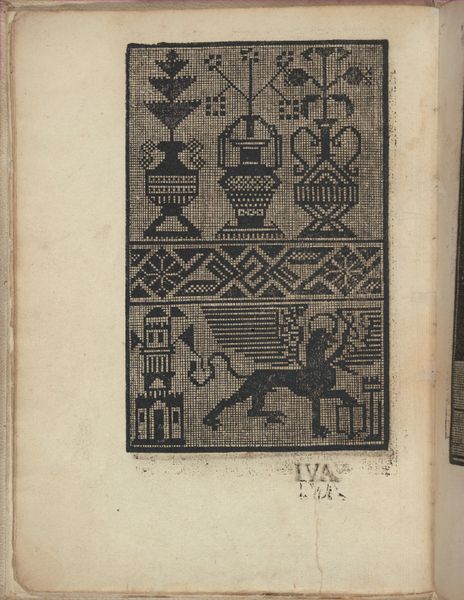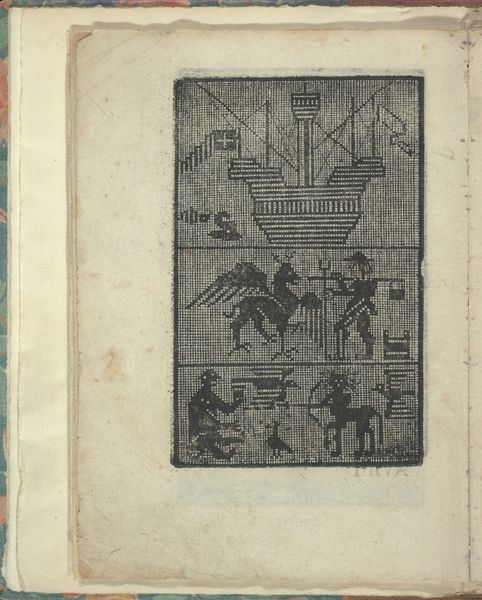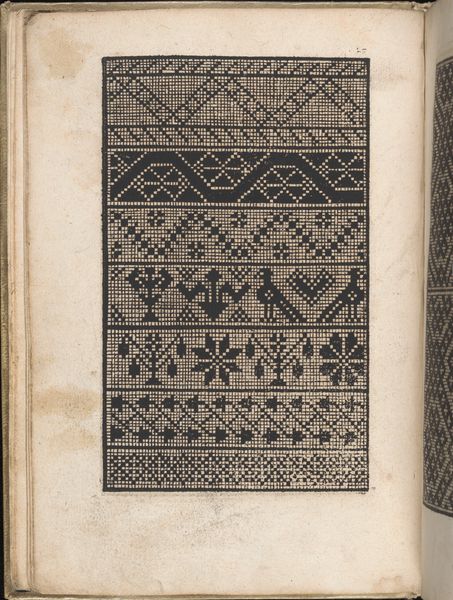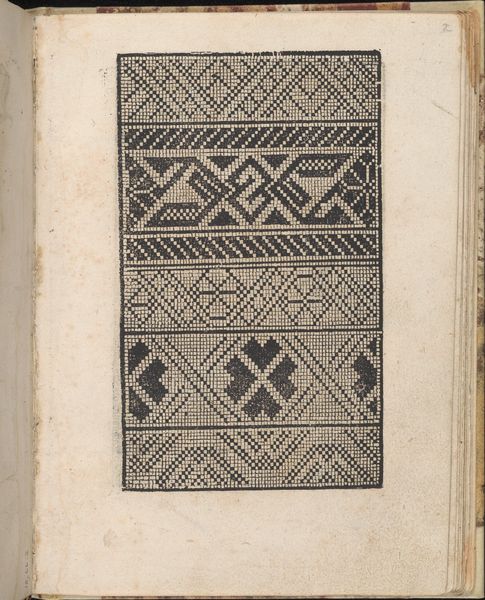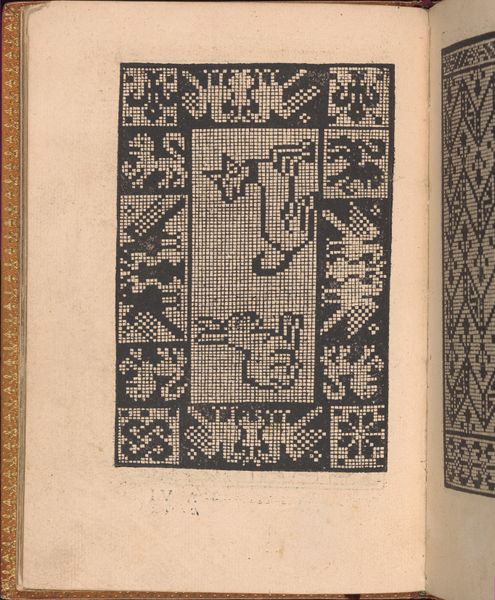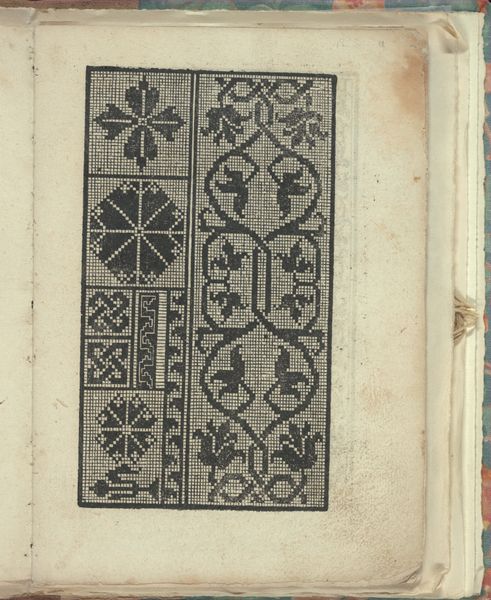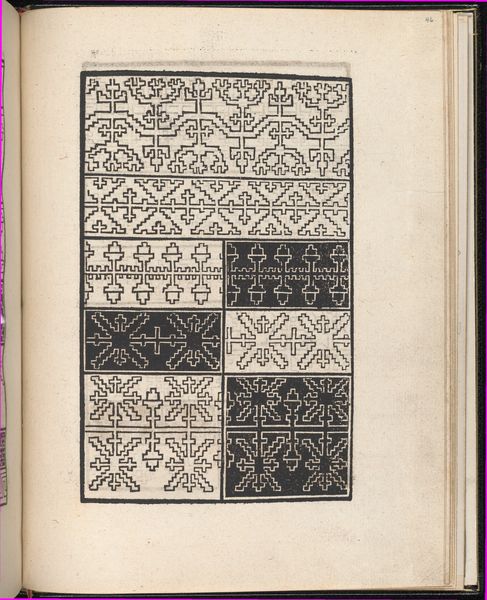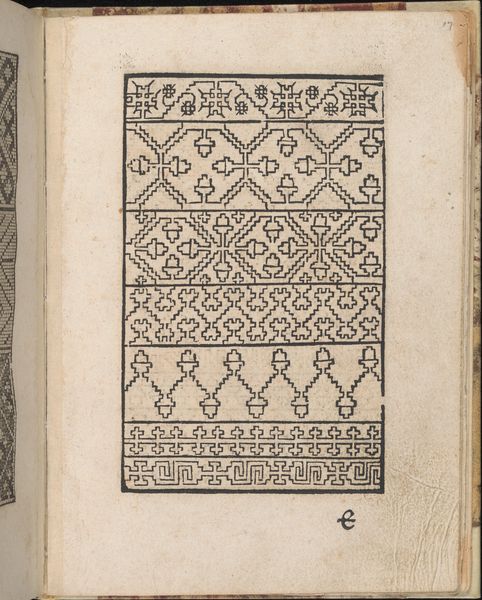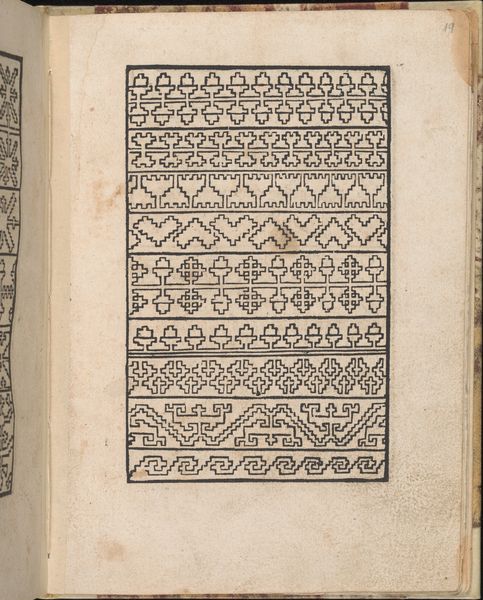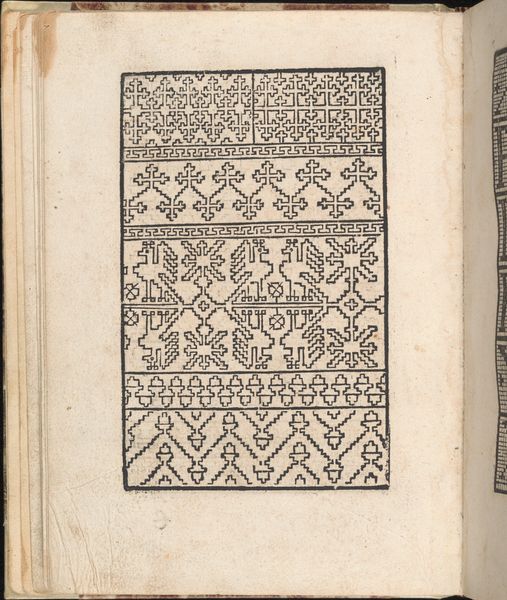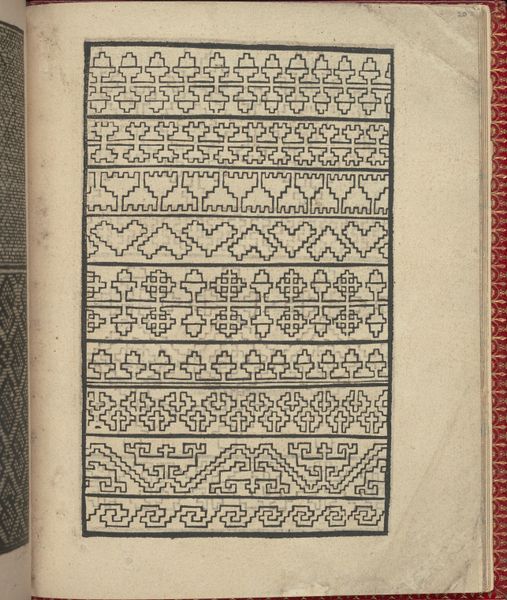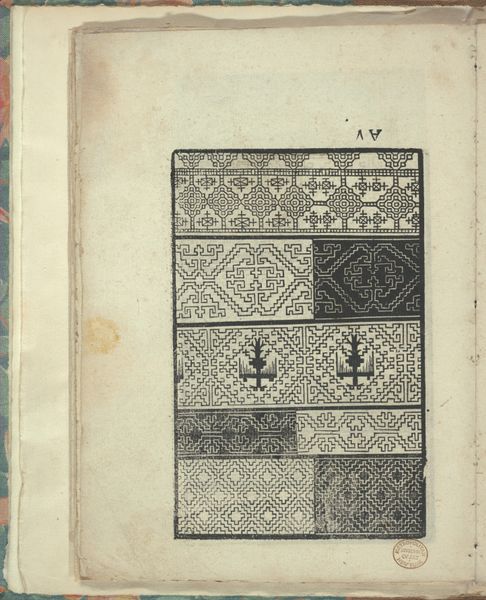
Opera Nova Universali intitulata Corona di racammi, page 26 (verso) 1530
0:00
0:00
drawing, graphic-art, print, engraving
#
drawing
#
graphic-art
# print
#
11_renaissance
#
engraving
Dimensions: Overall: 8 7/8 x 6 7/8 in. (22.5 x 17.5 cm)
Copyright: Public Domain
This is page 26 from ‘Opera Nova Universali intitulata Corona di racammi,’ made in Venice in the 16th century by Giovanni Andrea Vavassore. The woodcut print is a pattern for embroidery, revealing the Renaissance interest in both domestic craft and the dissemination of design through printmaking. These pattern books were instrumental in shaping the visual culture of the time, allowing for the widespread adoption of fashionable designs. The patterns often drew from classical motifs or popular imagery. Here, we see vases, geometric shapes, and what looks like a griffin. For women in particular, embroidery was not just a pastime, but a crucial skill, reflecting their status, creativity, and connection to broader artistic trends. Imagine the texture and color these stark lines would become when rendered in silk or wool. They would reflect the skill of the maker and the play of light on cloth. While embroidery is often seen as ‘women’s work,’ these designs gave them agency and a voice through the needle. Vavassore’s pattern suggests the convergence of art, craft, and commerce, connecting the intimate act of creation with the pulse of a dynamic society.
Comments
No comments
Be the first to comment and join the conversation on the ultimate creative platform.
